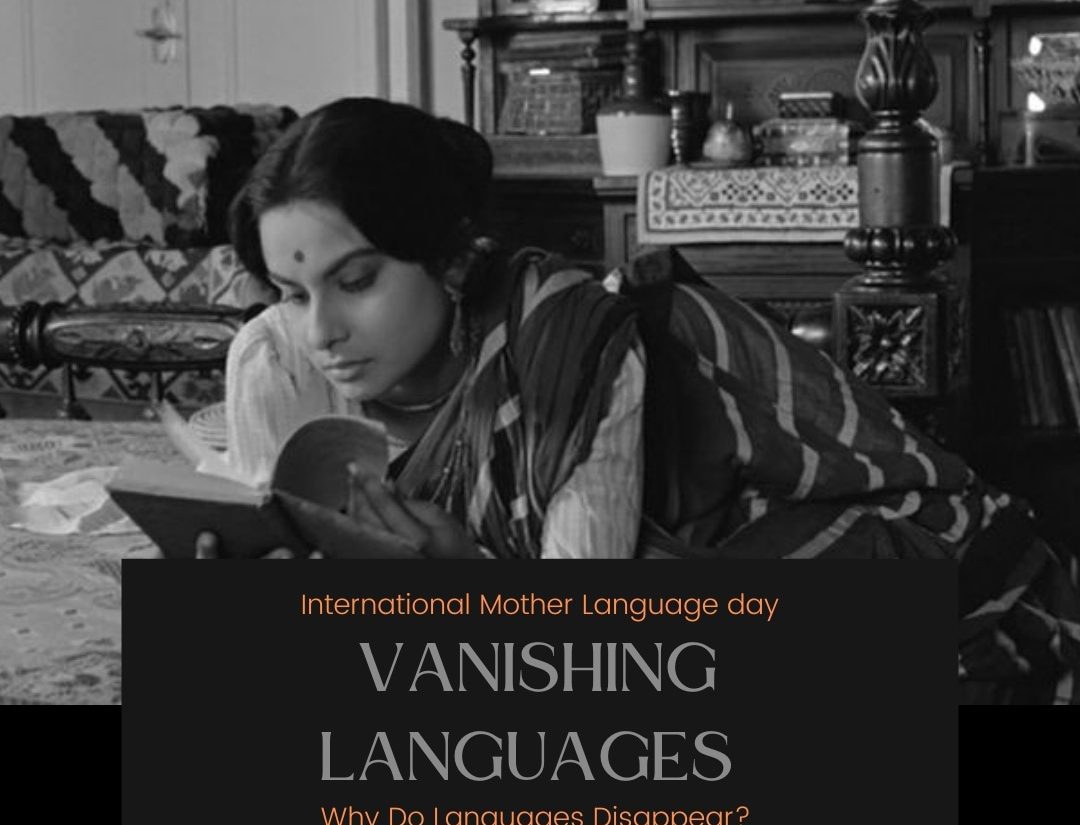VANISHING LANGUAGES: Why Languages disappear?
- iamanoushkajain
- February 22, 2022

Article by EIH Subject Matter Expert
Dr. Sonika Sandhu
The world is rich with its 7000 languages but did you know every fourteen days one of these languages dies out and disappears forever. Today nearly 90% of these languages have less than 100,00 active speakers and nearly 2000 of the languages have even got lesser than 1000 speakers.
Languages throughout our history have constantly appeared, evolved and vanished. Some of the common reasons for their extinction in the past were: natural disasters which would wipe out entire communities, wars and genocides but today the most common reason is more peaceful: Globalization. And no region has been spared from its spate, even in the remotest forests of Amazon the indigenous ethnic tribes are preferring to learn Portuguese rather than their own language, so that they can keep up with the world, in South Africa the younger generation is choosing English over traditional languages like Venda and Tsonga.
Today about 60% of the world’s populations only speak twenty odd languages, a great reduction in diversity as compared to the past. And out of these twenty spoken languages, English, Spanish and Chinese are again taking precedence pushing the others in a corner where they too will be soon forgotten.
Let us ask this “Is it really alarming to lose a language?” The answer is YES: when a language vanishes, we lose culture, knowledge, history which is generations old and is tried and tested. An interesting anecdote to understand this was seen in Australia, the colonists were suffering from various skin problems and doctors were also helpless, however upon asking the local aboriginal people, they gave the name of a local plant in their own tongue which would provide the cure. Without this knowledge the cure would have remained obscured and forgotten. Another example comes from Bolivia, where the speakers of Kallawaya language have describes various medicinal plants of the rainforest which modern doctors have never heard of. Not only in the field of medicine the ethnic and traditional languages prove that the indigenous communities had a unique understanding and respect for their natural environment, the Yupiks had nearly 99 words just for ice, proving their sense of wonder at this natural phenomenon.
Today according to Ethnologue (2015) and various studies, nearly 3000 of the world’s indigenous languages are under threat of being endangered or dying . Our planet seems to exhibit an astonishing ratio of speakers to their languages: 97% of the world’s people speak about 4% of the world’s languages (UNESCO 2003). To understand this situation let us first understand when is a language declared under threat. A language is in danger when its speakers no longer pass it onto the next generation. Today, many speech communities of minority languages are shrinking and their languages will ultimately vanish, if these developments are not reversed. Children may no longer acquire languages even when they are still spoken by many thousands of elderly speakers . Contrary to popular belief endangered languages are not necessarily languages with less speakers, the viability of language is also determined by the general attitude of its speakers towards their own heritage, culture and traditions. An interesting example of this is the Suruaha community of the Amazonia in Brazil. It comprise of only 150 people and all its members speak only Suruaha, despite its small size it has high respect for its language and values and continues to maintain and speak it, allowing this language to be categorized as safe just because its members continue to speak and teach it to their children. In contrast, many members of numerically large speech communities no longer pass their heritage languages onto the young generation. Such languages may still be spoken by thousands of elders, but nevertheless must obviously be considered as being endangered. Language endangerment can also be due to existence of multiple linguist communities in an area, the cultural exchange would lead to replacement of linguist elements. Many times such communities are not of uniform status and the dominating communities may affect the language of the inferior or smaller community. The communities with a lower status commonly acquire proficiency in the language of the dominant group. They may be inclined to relinquish their culture, including their language, and may decide to adopt the language and culture of the dominant community. Sometimes language are completely replaced, this is seen generally during nation building when the new nation adopts a specific language and starts propagating it within its realms. . For instance, on the African continent, several small communities replaced their heritage languages by Swahili in Tanzania, Somali in Somalia, or Arabic in the states of the Maghreb region.
The Indian Subcontinent is very rich when it comes to languages, it has a deep and extensive historical tradition throughout which the subcontinent has never been unified under a single language. In India oral traditions were the norm ,it was under Emperor Asoka (268-266 BCE) the first language laws were formulated and he recognised the language rights of his citizens. This can be seen in his edicts wherein he ordered them to be written in local languages for the people to have a better understanding of his message and intent (Mallikarjun, 2012).
The languages of India can be broadly categorized into four branches: Dravidian, Indo-European, Austro-Asiatic, and Tibeto-Burmese. More recently, two other language branches have been reported Tai-Kadai and Great Andamanese (Kulkarni-Joshi, 2016). Besides the languages which can be classified under above mentioned, there are some languages which are isolates for example: Nihali is spoken only in central India. The speakers of this language were not in contact with the mainstream and their language has independently evolved without any outside influence.
According to the 2011 Census, over 1,950 languages spoken in India in addition to several dialects and languages which remain undocumented or without official status. The SIL Ethnologue estimates there are 415 living languages in India (Ethnologue, 2021). By Ethnologue,( 2021) India is the fourth most linguistically diverse country in the world, but today nearly 30% of its native languages are at risk, nearly 197 of these are put on the UNESCO’s Atlas of the World’s Languages in Danger list making India the country with the most endangered languages in the world (complete list of endangered languages in India is contained in Appendix D). Making the extinction of languages a serious concern for everyone. So how can we help and ensure survivability? According to Prof K.David Harrison social media is a very powerful tool today. You tube, Texting and other digital platforms can be tapped to make languages exciting and to ensure their relevance. This is already being done by Native Americans of North America who are using social media to popularize their native language. Teenagers are encouraged to go online and chat with each other in Cherokee and Navajo. Another way could be creating talking dictionaries. Such dictionaries are already being produced, Prof Harrison together with National Geographic’s Enduring Voices has already produced 8 such dictionaries which contains 32,000 words from 8 endangered languages. Besides these endeavours, one must take pride in their mother tongue. It is a symbol of your culture and where you come from and should be part of the legacy which we pass on to our next generation.
References :
- Immidisetti, Samantha. “The State of Language, Endangerment, and Policy in India: A Forking Path.” (2021).
- Kulkarni-Joshi, Sonal. (2019). Linguistic History and Language Diversity in India: Views and Counterviews. Journal of Biosciences. July 2019, Vol. 44 Issue 3, p1, 10 p. DOI: 10.1007/s12038-019-9879-1
- Mallikarjun, B. (2012). The Evolution of Language Laws in Post-Independence India: A Monograph. Language in India: Strength for Today and Bright Hope for Tomorrow, vol. 12, 9 Sept. 2012, pp. 1–90. Retrieved February 24, 2021, from
- Mohan, S. (2010). Minority and Majority Linguistic Groups in India: Issues and Problems. Bulletin of the Deccan College Research Institute, 70/71, 261-269. Retrieved January 24, 2021
- UNESCO Ad Hoc Expert Group on Endangered Languages. (2003). Language Vitality and Endangerment. Retrieved from the United Nations Educational, Scientific, and Cultural Organization website:
- UNESCO Language Vitality and Endangerment Methodological Guideline: Review of Application and Feedback Since 2003. (2011). Language Vitality and Endangerment. Retrieved from the United Nations Educational, Scientific, and Cultural Organization website.





